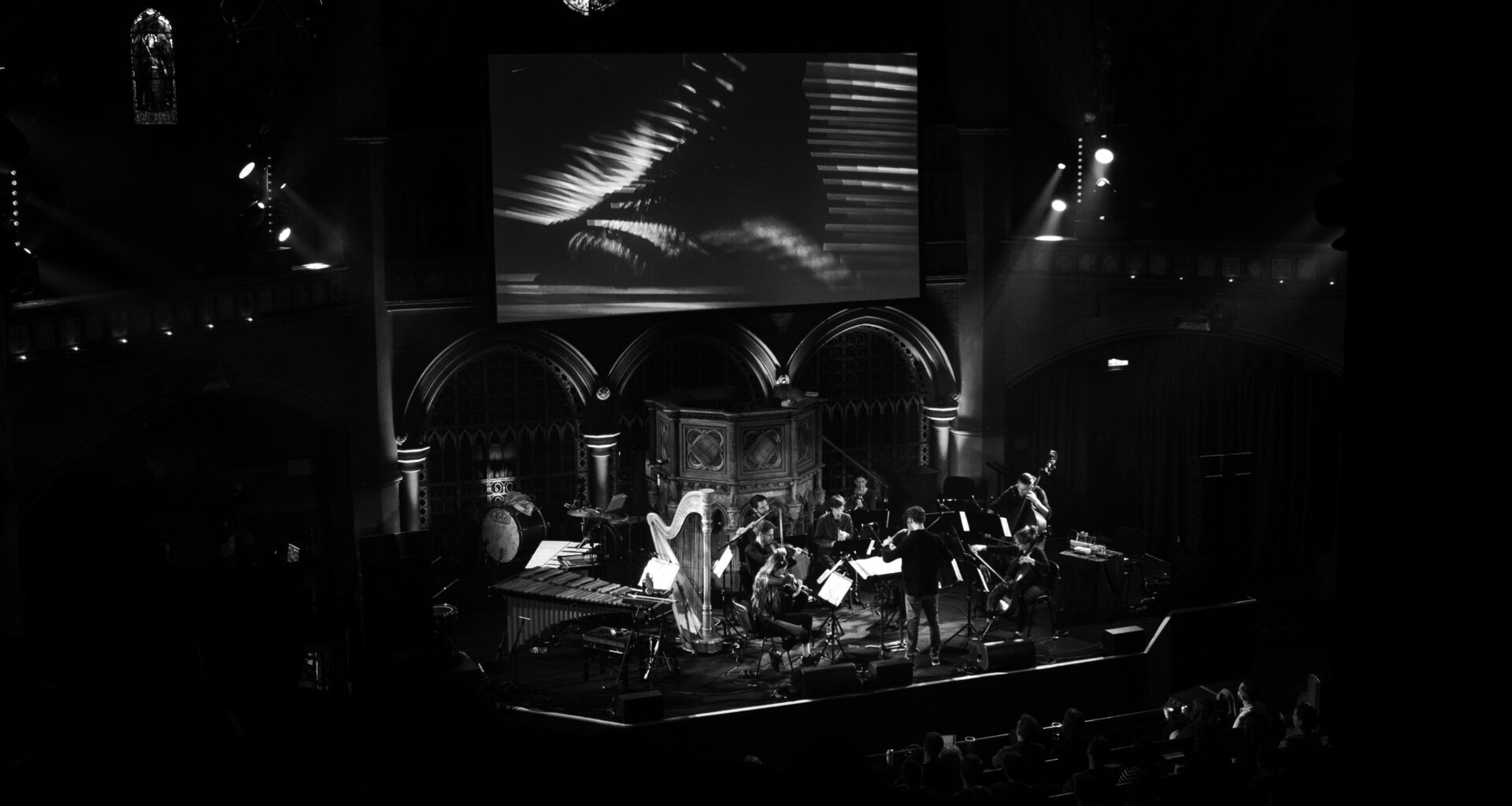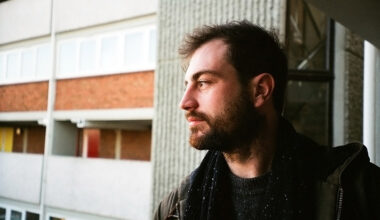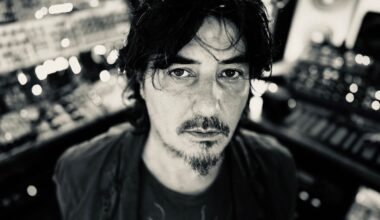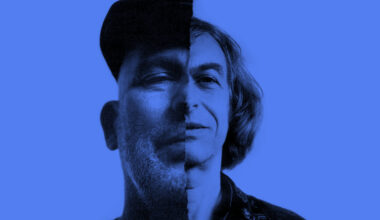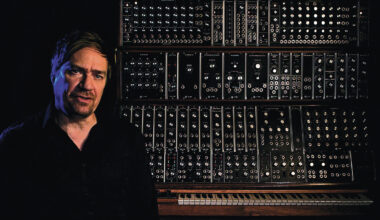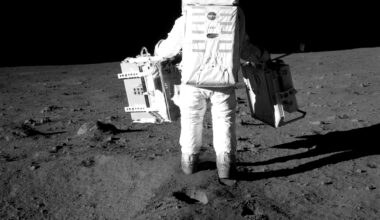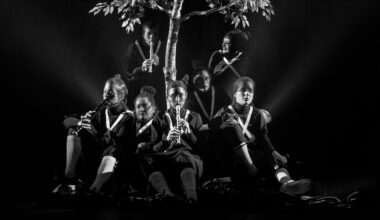Organs belong in cold churches booming out ‘Onward Christian Soldiers’, right? With her Organ Reframed festival at London’s Union Chapel, Claire M Singer has a better use for these grand old instruments
A mist of dry ice evaporates into the purple and blue lights of the hushed church hall. Ornate arches loom either side and the ceiling rises to a dome in the huge empty space. In the pews, metres from the stage, a quiet reverence descends as people filter in and take their seats. The lights lower and an orchestra tunes up while the organist takes his seat out of sight. What we hear as the performance begins though is not the sound of a genteel recital, the accompaniment to a psalm, or a classical performance. It’s an experimental piece of new music that bears a closer resemblance to some lost 1980s synthpop soundtrack.
The historic Union Chapel in Islington, London, is the venue for this organ and orchestra performance. It might be the last place you’d expect to hear a quasi-electronic experiment, but for a second year, the famous site plays host to the Organ Reframed festival, a celebration of the storied, yet rarely-used instrument.
Invention of musician and composer Claire M Singer (Musical Director of the organ at Union Chapel), the festival aims to make the organ a vital part of modern music, placing it in the context of the avant-garde, neo-classical and electronic scenes.
“It’s an amazing instrument and it should be at the forefront of new music today,” says Singer. “I want to change people’s minds about what this instrument is capable of.”
Tonight’s performance features specially commissioned pieces written by artists at the forefront of electronics. In addition to existing pieces by Philip Glass and Sufjan Stevens, classical/ambient alchemists Mira Calix and Emily Hall, sound sculptor Tim Hecker and Washington synthseer Kaitlyn Aurelia Smith are some of the starry names who’ve created works especially for the show.
“I look for artists who are really pushing the boundaries of the fields that they’re working in,” says Singer of her selection process. “That attracts me to commission them, because I feel they can do the same with the organ. It’s exciting to get those artists working in a different way.”
For Mira Calix, who’s released albums on Warp and composed works for theatre, opera and art installations, being asked to write a brand-new piece for the festival offered a chance to fuse her electronic and classical backgrounds in a fresh style.
“It was an unusual opportunity,” says Calix. “I write a lot for ensembles and I’ve worked with the London Contemporary Orchestra before, but to work with the organ is not a common thing for any modern composer. The way I approached it was looking at the idea of frequencies, which is more what you think about when you write electronic pieces.”

The London Contemporary Orchestra performs alongside organist James McVinnie at Organ Reframed tonight. Though these recitals are entirely acoustic (bar a few effects), the sound is very much skewed towards the sensibilities of electronic music. This combination of classical and electronics is the background of festival creator Singer, who has created and performed works for the Tate Modern, and galleries and venues across the USA, Germany, Sweden, the Netherlands and UK.
“I did a music degree and focused on the cello, then I did a Master’s where I focused more on electronic composition,” she says. “I played in bands as well; orchestras; a really varied background. I don’t really come from one angle. I was asked to write my first organ piece about 12 years ago for the Sound Festival in Aberdeen.”
Back then, Singer was struck by the adaptability of the instrument, and over time, the concept for a new application of the organ occurred to her, fusing her dual musical disciplines.
“When I encountered the instrument I couldn’t believe how amazing it was, and how versatile,” she says. “I wanted to start this festival since I wrote my first organ piece. It’s the world’s first synthesiser. I have been working with it this long and I’m still learning what it can do. It produces the colours you would get from an orchestra; you have that at your fingertips.”
The first performance tonight is Emily Hall’s ‘Passing Through’. Initially a minimal piece reminiscent of Steve Reich, it builds into a melancholy and beautiful sliver of synthpop, which wouldn’t be out of place on the ‘Stranger Things’ soundtrack. The complex layering of woodwinds and strings, harp and upright bass create a lattice around the central organ figure. On a projector screen mounted above the stage, we see McVinnie’s fingers dance across the keys. It’s a mesmerising arrangement, which is followed by the 23-minute long drone of Phill Niblock’s ‘Thinking Slowly’.
The sequencing of the music reinforces the sense that the organ, which underpins each piece, can be played in diverse ways. Mira Calix’s creation is especially arresting and dramatic. It ranges from sub drones to high-pitched flutes, before launching into a thrilling orchestral manoeuvre. Her piece takes advantage of the sonic possibilities of the organ – the things it can do that other acoustic instruments can’t.
“I’ve milked the sub bass on the organ; I’m using the bottom end,” says Calix, with a smile. “There’s no other instrument that can do that, except for electronics. You can write for an organ and it sounds really full bodied, but I was really interested in the idea of not making it full bodied, taking the middle out. Maybe in a way it sounds more like a synth, unlike the other pieces where [organist] James is playing things that are more musical.”
Calix’s piece, ‘#DeHFO’ (or ‘The Department For How To Fuck Ourselves’), is particularly subversive. The artist, who has recently explored politics in her work, and the idea of social media as a virtual space, uses the organ – that instrument associated with history, churches and remnants of old England – to pass comment on the Brexit divide, and the state of the nation. The high and low tones that take turns in the composition represent the different viewpoints of leave and remain.
“It’s symbolic and conceptual because I’ve gone, ‘This is a great big Brexit divide’, there’s no mid-range or middle ground,” she reasons. “You tend to be leave or remain; it’s like Marmite. There are not many who can be reasonable, in the middle. I’m not one of them! And that’s the way I’ve used the instruments.”
Tim Hecker’s ‘Heatwave!’, despite its acoustic basis, is closer to the contorted electronic melodies of Boards Of Canada, inspired, Hecker says, by the scorching temperatures and wildfires of the past Californian summer. Here, distorted organ drones meld with beautiful orchestral passages.
Taken as a whole, Organ Reframed is a remarkably successful experiment, though according to Singer, it hasn’t been easy trying to get people interested in the idea. This instrument has an image problem.
“I find when you mention the word ‘organ’, a lot of people tend to switch off. They’ve made their minds up,” she admits. “When I was thinking about the name for the festival, I thought, ‘Do I include organ, or not? Will it put people off?’. But I’m proud of it; I wanted it to be in the title. That was the whole idea of getting the design right, with bright colours, to draw people in.”
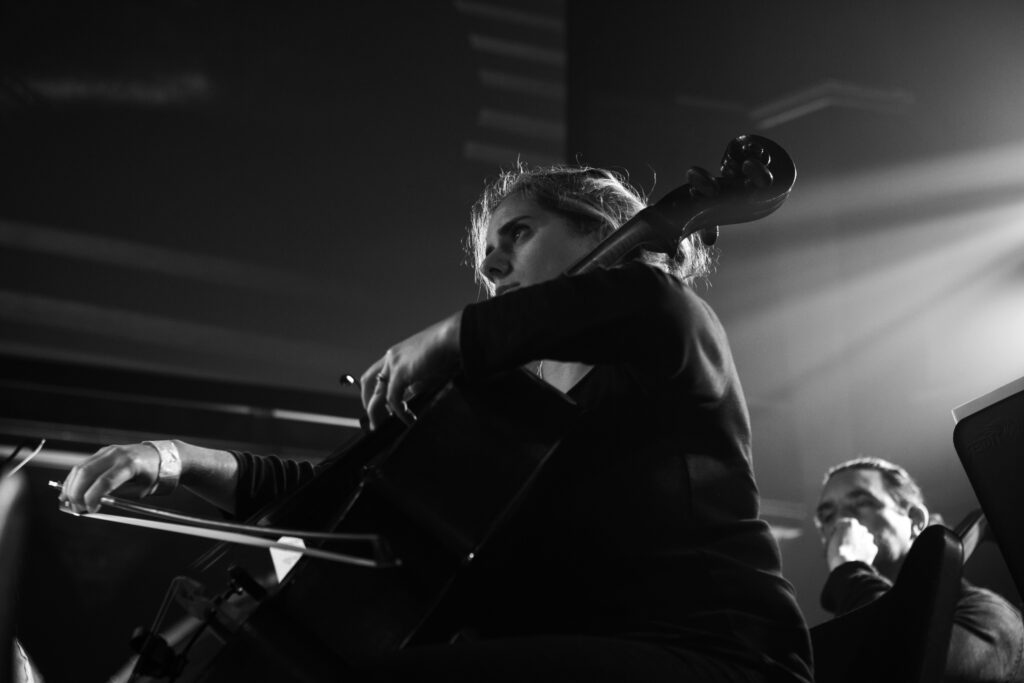
In addition to the concert of the first night, over the weekend there’s a live show from Low and a silent film set to organ music, plus a sound installation, with each attracting a slightly different audience. All these elements are designed to counter the perception of the pipe organ as a rather fusty old device.
“It shouldn’t be put in that box,” says Singer. “I’m trying to attract as many people as I can by having such a varied programme. There are organ lovers who are into going to recitals and classical concerts, and they’re open to seeing what can be done with it in a new light. There are also the artists who’ve composed for this weekend, who will bring their own following, the people who are into electronic and experimental music, and there’s also a sound installation, so we get the art world coming as well.”
Nonetheless, Singer admits that a big reason why the organ is absent from so much contemporary music is its inaccessibility. Even those who’d like to use it generally can’t.
“They are usually housed in a church or a concert hall and access can be tricky,” says Singer. “You obviously can’t take an organ home and learn it. With the festival, that’s the whole point. It’s about giving these composers time with the organ to get to know it. The only way you’re going to create innovative work is if you spend time with the instrument, rather than spending time at home looking at an orchestration book and saying, ‘That’s what the organ can do’.”
“I would do more work with the organ, especially now I’ve learnt a bit more,” adds Calix. “Working with people like Claire and James, there’s so much to discover. But what are the chances? They’re slim, because there’s only a handful of organists or places that would want composers writing for them.”
One of the most impressive pieces of the night is Sufjan Stevens’ ‘The Year Of Our Lord’, a secular hymn that really shows how spiritual the organ can sound, even when shorn of its religious overtones. Similarly, Kaitlyn Aurelia Smith’s beautiful closer, ‘Action Of Inaction’, is akin to one of her winding, chlorophyll-hued synth songs, which instead implores us to revere nature and organic processes rather than lofty theological ideas.
For Calix, the main draw of Organ Reframed is so people can hear this churchy yet versatile instrument rendered anew.
“For an audience, it’s getting to hear people like Tim Hecker write an organ piece,” she enthuses. “We associate the sound with Bach or Elgar or these liturgical Sunday hymns. It’s a chance to hear it without that association, which I think is really interesting. It gives an audience a new opportunity to hear what is an exciting instrument, because it fills a room.”
Union Chapel is the ideal home for Organ Reframed. Not only does the venue have the splendid acoustics and the natural reverb of a church, it houses a particularly remarkable organ too.
“It’s a very special organ,” says Singer. “It’s unique in that it’s the only one in England with water hydraulic power, you can switch between electric and water hydraulics. It was built by Henry Willis and is one of the finest pieces of his work. The organ is referred to as the Rolls-Royce of organs, so it is up there. Even if I wasn’t Musical Director, I would still choose this organ.”
Calix reckons that the current popularity of classical/electronic fusionists such as Nils Frahm and Ólafur Arnalds has opened up the possibilities for this kind of event.
“There’s so many people who either come from my route, from electronic into classical, or from classical, like Anna Meredith, into electronics,” she says. “There’s a whole genre that has no name. I can see people who love Warp, especially the early stuff, would love everything here tonight.”
Looking at the rapt attention of the crowd, and the applause at the end of the concert, Singer’s ambition to reframe the organ is fulfilled. It’s spectacular, and bodes well for next year’s instalment.
“The organ in particular is having more of a spotlight moment,” concludes Singer. “More people are starting to use it, so I can only see that growing. I’m just trying to do what I can.”
